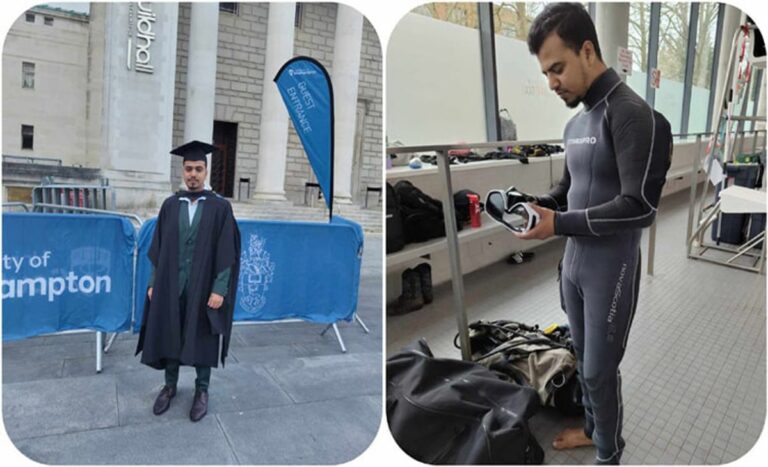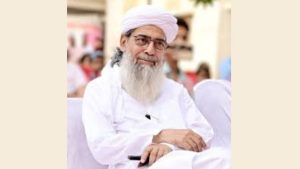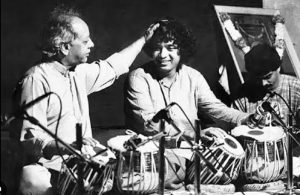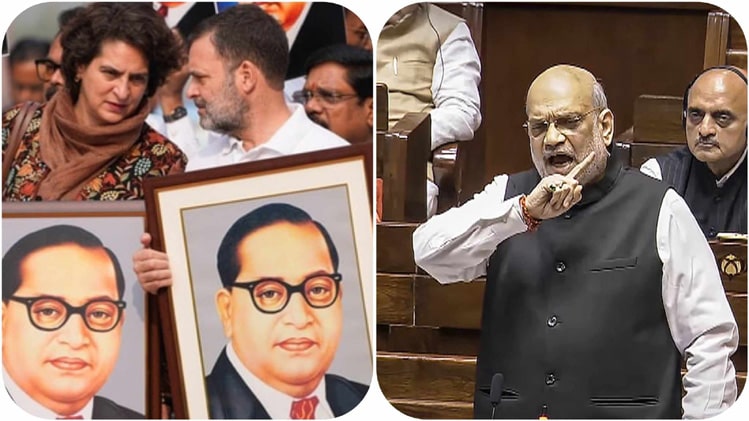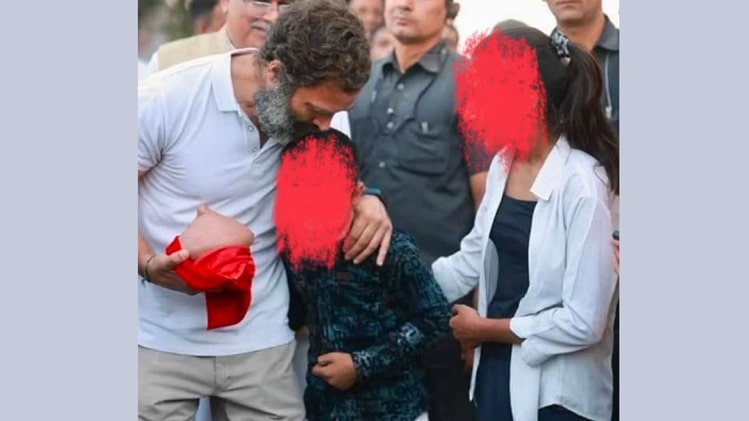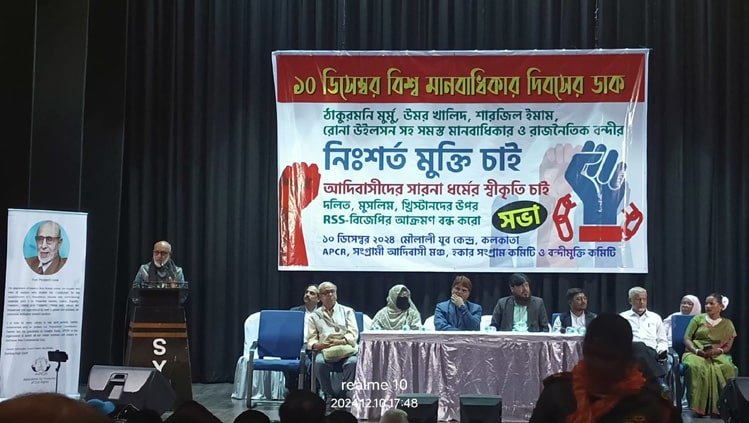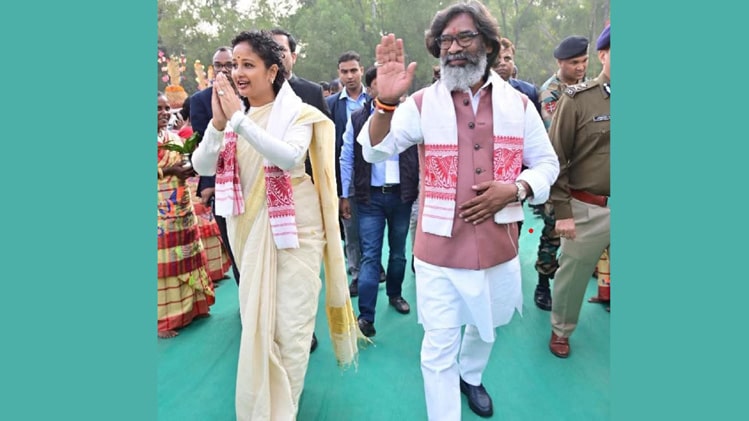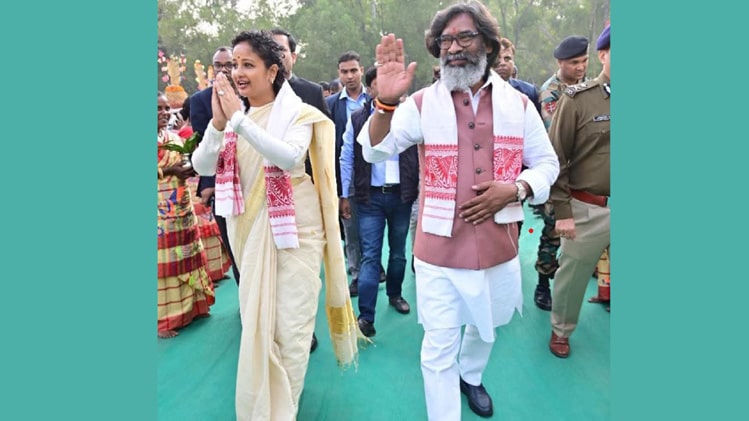[dropcap]दि[/dropcap]सम्बर 24 को पार्श्व गायक मोहम्मद रफ़ी का सौवाँ जन्मदिन था, लेकिन मोहम्मद रफ़ी हमारे दिलों दिमाग से गायब नहीं हुए अपितु ऐसा लगता है उनके चाहने वालों की संख्या निश्चित तौर पर बढ़ी होगी। 24 दिसंबर 1924 को पंजाब के सुल्तान सिंह कोटला नामक गाँव मे जो आज के अमृतसर जिले का मजीठा कस्बा है। गाँव मे एक फकीर के साथ चलते और उनका अनुसरण करते और गाते गाते उन्हे फीको नाम से जाना जाने लगा। 1935 मे उनके परिवार लाहौर मे शिफ्ट हो गया और वहा उन्होंने शास्त्रीय संगीत की शिक्षा ली। उन्हे पहली बार स्टेज पर गाने का मौका उस समय मिला जब लाहौर मे उस जमाने के मशहूर गायक कुंदन लाल सहगल साहब को आना था लेकिन उनके आने मे देरी के कारण से आयोजकों मे किसे ने 13 वर्षीय मोहम्मद रफ़ी को सुना था और उसे स्टेज पर आकार गाने को कहा। पहले तो लोगों को लगा के कोई मज़ाक कर रहा है बाद मे जब उन्होंने गाना शुरू किया तो बहुतों को ये लग गया के गानों का एक सितारा आ गया है। फिर 1941 में उन्होंने लाहौर मे एक पंजाबी फिल्म गुल बलोच के लिए पहला गाना रिकॉर्ड किया। ये फिल्म 1944 में रिलीज हुई।
1944 मे वह अपने पिता के साथ मुंबई आ गए जहां वह के प्रख्यात भेंड़ी बाजार मे रहने लगे। फिर उनकी मुलाकात प्रख्यात निर्माता निर्देशक अब्दुल रशीद करदार, महबूब खान, और नजीर से हुई। यही पर संगीतकार श्याम सुंदर ने उन्हे अपनी फिल्म गाँव की गोरी के लिए हिन्दी फिल्मों मे उनका पहला गाना दिया जिसके बोल थे, “अजी दिल हो काबू मे तो दिलदार की ऐसी की तैसी”। प्रारंभ में अन्य गायकों की तरह मोहम्मद रफ़ी पर भी के एल सहगल का प्रभाव दिखाई देता है। फिर उन्होंने अदायगी मे भी किस्मत आजमाई। फिल्म लैला मजनू 1945 और जुगनू 1947 मे उन्होंने एक्टिंग के प्रयास किए जो बहुत नहीं चले। अनमोल घड़ी मे नूरजहां के साथ उनका गाना “यहा बदला वफ़ा का बेवफाई के सिवा क्या है, मोहब्बत करके भी देखा, मूहोंबबत मे भी धोखा है’, लोगों को बहुत पसंद आया। 1947 मे पाकिस्तान बनने पर नूरजहां वहा चली गई लेकिन रफी साहब ने भारत मे ही रहने का निर्णय लिया। उन्हे फिल्मों मे गाने मिलने शुरू हो गए थे लेकिन 1948 मे गांधी जी की हत्या कए बाद गीतकार राजेन्द्र कृष्ण और संगीतकर हुस्न लाल भगत राम ने उनसे एक गीत गवाया जिसने पूरे देश को हिला कर रख दिया था। गीत बापू की अमर कहानी लगभग 12 मिनट लंबा है और लोगों मे बहुत प्रचलित हुआ। 1944 मे वह संगीतकार नौशाद के लिए ‘पहले आप’ फिल्म मे ‘हिंदुस्तान के हम हैं, हिंदुस्तान हमारा है’ गया चुके थे। ‘अनमोल घड़ी’ से नौशाद और मोहम्मद रफ़ी के बीच दोस्ती और मजबूत हो गई जहा रफी ने ‘तेरा खिलोना टूट बालक’ गाना गया।
1952 मे फिल्म बैजु बावरा मे रफी नौशाद की जोड़ी ने वो कमाल किया जो आज तक भारतीय संगीत के इतिहास मे शायद कोई कर नहीं पाएगा। फिल्म की कहानी कोई बहुत कमाल की नहीं है और न ही फिल्म की फोटोग्राफी मे कोई दम है लेकिन नौशाद के संगीत, शकील बदयूनी के गीतों और रफी की आवाज ने वो ऊंचाई छू दी जिस तक पहुंचना उस दौर मे तो कम से कम बहुत मुश्किल था। शकील बडायूनी ने जो गीत लिखे वो हमारे सिनेमा और संस्कृति की सबसे बड़ी धरोहर है और नौशाद के संगीत और मोहम्मद रफ़ी की आवाज ने इन गानों को नई ऊंचाइयों तक पहुंचा दिया। इस फिल्म का सबसे महत्वपूर्ण गाना है ‘ओ दुनिया के रखवाले, सुन दर्द भरे मेरे नाले’ को जिस ऊंचाई तक मोहम्मद रफ़ी ने पँहुचाया वो आज के दौर मे भी असंभव है। इसके बाद इस फिल्म का सबसे महत्वपूर्ण भजन है ‘ मन तड़पट हरि दर्शन को आज’, में रफी ने अपने शास्त्रीय गायन से साबित कर दिया के उन्हे संगीत की कितनी विशाल समझ है। इसी फिल्म मे मोहम्मद रफ़ी और लता का एक दो गाना है: तू गंगा की मौज मे मै यमुना का धार, हो रहेगा मिलन ये हमारा तुम्हारा’, आज भी सुना जाता है। नौशाद-शकील बदायूंनी-मोहम्मद रफी का एक और अविषमरणीय गीत है 1948 में आई फिल्म ‘दुलारी’ से जिस फिल्म को तो शायद कोई याद न रखता हो लेकिन गीत हमारे होंठों पर आज भी है: सुहानी रात ढल चुकी, ना जाने, तुम कब आओगे, यहा की रुत बदल चुकी, न जाने तुम कब आओगे’। मुझे लगता है आज भी शाम की तनहाई मे ये गीत हमारे दिलों में खूबसूरत रूमानियत भर देते है।
मदर इंडिया मे मोहम्मद रफ़ी के ‘दुख भरे दिन बीते रे भैया, अब सुख आयो रे, रंग जीवन मे नया लायो रे’ के साथ साथ मतवाला जिया, बेहद खूबसूरती से गया गया है। नौशाद रफी साहिर और शकील की जोड़ी इसलिए भी खूब चली क्योंकि रफ़ी का उर्दू पर अच्छा नियंत्रण था और वो शायरी के भावों को बेहद संजीदगी से सुरों का रूप दे देते थे। ‘मेरे महबूब’ फिल्म का ‘मेरे महबूब तुझे मेरी मूहोंबबत की कसम, मेरा खोया हुआ रंगीन नजारा दे दे, या फिर कोहिनूर फिल्म मे लता मंगेशकर के साथ ‘दो सितारों का जमीन पर है मिलन, आज की रात’, फिल्म दिल दिया दर्द लिया का टाइटल सॉन्ग: दिलरुबा मैंने तेरे प्यार मे क्या क्या न किया, दिल दिया दर्द लिया, या कोई सागर दिल को बहलाता नहीं, तो दिलीप कुमार पर पूरी तरह से फिट होता है। वही दिलीप साहब के लिए उन्होंने क्लैसिकल गीत भी दिए। संघर्ष फिल्म मे “मैरे पैरों मे घुँघरू बंधा दे तो फिर मेरी चाल देख ले’ अथवा फिल्म गंगा जमुना का नैन लड़ी जई है तो मनबा मा कसक होई बे करी को आज भी भोजपुरी का सबसे महत्वपूर्ण गीत माना जा सकता है। फिल्म राम और श्याम कथानक के तौर पर बिल्कुल साधारण थी लेकिन इस फिल्म मे दिलीप साहब पर ये गीत बहुत चला: ‘आज की रात मेरे दिल की सलामी लेले’. उसके अलावा भी गीतों की फहरिष्ट बहुत बड़ी है इसलिए बहुत महत्वपूर्ण गीत छूट भी जाते है और उनके साथ न्याय नहीं हो पाता। फिल्म मेला के लिए: ‘ये जिंदगी के मेले दुनिया मे कम न होंगे, अफसोस हम न होंगे’ भी अपने समय में बहुत हिट रहा। दिलीप कुमार के समकालीन राज कपूर ने मुकेश को अपनी आवाज कहा और कुछ एक फिल्मों में मन्ना डे ने उन्हे अपनी आवाज दी लेकिन 1949 की फिल्म बरसात मे राज कपूर ने मोहम्मद रफी से एक गीत गवाया जो फिल्म मे राज कपूर नर्गिस दत्त के विछोह को दिखाने के लिए बैकग्राउंड के तौर पर दिखाया गया है गीत के बोल थे “मैं जिंदगी में हर दम रोता ही रहा हूँ”।
ऐसा कहा जाता है के रफ़ी साहब नौशाद के संगीत और दिलीप कुमार की आवाज थे लेकिन हकीकत ये है के उनके गानो का कोई जवाब नहीं। उस दौर मे दिलीप कुमार के समकालीन अभिनेता थे देव आनंद जो नवकेतन बैनर्स के तहत फिल्मे बना रहे थे। हकीकत ये कि एस डी बर्मन द्वारा संगीत बद्ध किए गए और शैलेन्द्र द्वारा लिखे गए बहुत से गीत जो देवानंद पर फिल्माए गए है उनका।
उसे दौर मे उन्हे ओ पी नैय्यर, शंकर जयकिशन, रौशन और एस डी बर्मन ने भी पहचान लिया और फिर शुरू हुई हिन्दी सिनेमा के एक नायाब गायक की यात्रा जिसके सुरों के लिए कोई साज मुकाबला नहीं कर सकता था। 1950 का दौर था जब फिल्मों मे नायक के तौर पर दिलीप कुमार ट्रेजेडी किंग की भूमिका निभा रहे थे और रफी उनके लिए दर्द भरे नगमे गा रहे थे। अक्सर गीत शकील बदायूंनी के होते थे। दिलीप कुमार के लिए रफी की आवाज बिल्कुल उनके अंदाज से मेल खाती थी। संगीतकार ओ पी नैययर ने मोहम्मद रफ़ी को बी आर चोपड़ा की फिल्म फिल्म नया दौर मे लिया और शायद उस दौर की यह उनकी पहली ऐसी फिल्म होगी जिसका हर एक गीत सुपर हिट हुआ। इस फिल्म से साहिर ने भी अपनी कलम और रोमांस का जलवा बिखेरा। ओ पी नैय्यर की एक और खास बात थी और वो ये के उन्होंने संगीत की दुनिया मे लता मंगेशकर के एकाधिकार को चुनौती दी। ये दौर ऐसा था के लता मंगेशकर से गाना गवाये बिना कोई ये मान ही नहीं सकता था कि फिल्म हिट होगी भी लेकिन ओ पी ने इस मिथक को तोड़ दिया। नया दौर ने ऐसी धूम मचाई के उसके गीत आज भी उतने ही जवा है जितने उस व्यक्त थे। ‘उड़े जब जब जुलफ़े तेरी’, और ‘मांग के साथ तुम्हारा मैने मांग लिया संसार’ दोनों रोमांस के परम थे और आज भी विवाह संगीत मे सर्वाधिक चलते हैं लेकिन इस फिल्म मे जिस गीत ने साहिर के समाजवाद को रोमांस से जोड़ा वो था ‘साथी हाथ बढ़ाना, एक अकेला थक जाएगा मिल कर बोझ उठाना’। ये गीत आज भी उतना ही महत्वपूर्ण है जितना उस समय था।
“मेहनत अपने लेख की रेखा, मेहनत से क्या डरना,
कल गैरों के खातिर की अब अपनी खातिर करना,
अपना दुख भी एक है साथी, अपना सुख भी एक,
अपनी मंजिल सच की मंजिल, अपना रास्ता नेक।
साथी हाथ बढ़ाना”
इस गीत को जिस अंदाज मे मोहम्मद रफ़ी ने गाया है उसकी उम्मीद किसी दूसरे से नहीं की जा सकती। हालांकि आशा भोसले ने इस गीत में पूरी बखूबी से अपनी खूबसूरत आवाज से उसके साथ पूरा न्याय किया है।
इसी फिल्म का ‘ये देश है वीर जवानों का, अलबेलों का मस्तानों का ‘अभी भी हमारे देश की शादियों में सबसे ज्यादा बजाया जाता है और आश्चर्यजनक रूप से देशभक्ति इस गीत मे लोग ज्यादा मजे मे डांस करते है। ओ पी नैयर का मोहम्मद रफ़ी आशा समीकरण कश्मीर की कली मे खूब फबा। शम्मी कपूर और शर्मिला टैगोर के रोमांस ने उसे युवाओ मे बेहद लोकप्रिय कर दिया। ‘दीवाना हुआ बादल, सावन की घटा छाई, ये देख के दिल झूमा, ली प्यार ने अंगड़ाई ने पूरे रोमांस की परिभाषा को बदल दिया। लेकिन इस फिल्म मे भी जिस गीत ने शम्मी कपूर की याहू छवि को और मजबूत कर दिया वो था ‘ये चाँद सा रौशन चेहरा, जुल्फों का रंग सुनहरा, तारीफ करूँ क्या उसकी जिसने तुझे बनाया’।
संगीतकार शंकर जयकिशन ने मोहम्मद रफ़ी को आर के से बाहर की फिल्मों में गवाया। कपूर भाइयों में ही शम्मी कपूर के लिए रफ़ी साहब ने वो गीत गाए जो जनता में दिलीप साहब के लिए गाए गीतों से बहुत आगे निकल गए। 1961 में आई फिल्म जंगली मे शैलेन्द्र के लिखे ‘याहू, चाहे कोई मुझे जंगली कहे’ ने देश भर में रफी की आवाज को नए युवाओ तक पहुंचा दिया। इसी फिल्म मे ‘एहसान तेरा होगा मुझ पर, दिल कहता है तो कहने दो, मुझे तुमसे मोहब्बत हो गई है, मुझे पलकों की छाँव मे रहने दो’ या मेरे यार शब्बा खैर, बहुत लोकप्रिय हुआ।’ शम्मी कपूर के लिए ‘तुमसा नहीं देखा’ मे ‘यू तो हमने लाख हसीं देखे है, तुमसा नहीं देखा’, चाइना टाउन मे ‘बार बार देखो हजार बार देखो, ये देखने की चीज है दिलरुबा, फिल्म प्रिंस मे शंकर जय किशन के साथ, ‘बदन पे सितारे लपेटे हुए, ओ जाने तमन्ना कहा जा रही हो’, फिल्म ब्रह्मचारी मे, “आजकल तेरे मेरे प्यार के चर्चे हर जुबान पर, सबको मालूम है और सबको खबर हो गई’, ‘दिल के झरोखे में तुझको बिठाकर, यादो को तेरी मैं दुल्हन बनाकर, रखुंगा मै दिल के पास, मत हो मेरी जा उदास’ आदि अलग अलग शेड के गाने गा कर रफी ने आवाज की दुनिया मे अपना दबदबा बना दिया था। दिलीप कुमार के मोडेल पर चलने वाले हर एक कलाकार के लिए रफ़ी की आवाज होना जरूरी था। उसी दौर मे राजेन्द्र कुमार, जिन्हे जुबली कुमार भी कहा जाता था के लिए मोहम्मद रफ़ी ने अत्यंत ही कर्णप्रिय गाने गाए। फिल्म ‘सूरज’ में बहारों फूल बरसाओ, मेरा महबूब आया है, मेरा महबूब आया है, फिल्म आरजू मे ‘ऐ फूलों की रानी, बहारों की मल्लिका, तेरा मुस्कुराना गजब ढा गया, फिल्म आई मिलन की बेला मे ‘ओ संयम तेरे हो गए हम, प्यार में तेरे खो गए हम, जिंदगी को मेरे सनम मिल गया बहाना’, मेरे महबूब में ‘मेरे महबूब तुझे, मेरी मोहब्बत की कसम, मेरा खोया हुआ रंगीन नज़ारा दे दे’ या ‘याद में तेरी जाग जाग के हम रात भर करवटें बदलते रहते है हो या.. फिल्म तलाश मे लता मंगेशकर के साथ ‘पलकों के पीछे से क्या तुमने कह डाला,” अभी भी उस दौर के रोमांस को जिंदा रखते है। साथ के दशक के इस दौर में शम्मी कपूर की स्टाइल मे जॉय मुखर्जी और विश्वजीत दोनों ही खूब चले और इन दोनों की ही फिल्मों में ओ पी नैय्यर रफी आशा भोसले के गीत भी बहुत पॉपुलर हुए।
फिल्म मेरे संनम के लिए ‘पुकारता चला हूँ मै, गली गली बहार की, बस एक छाँव जुल्फ की, बस एक निगाह प्यार की’ में रफ़ी की आवाज का जादू दिखता है वैसे ही जॉय मुखर्जी के लिए ‘बंदा परवर, थाम लो जिगर, बन के प्यार मै आया हूँ, खिदमत मे आपकी हुज़ूर बस येही दिल लाया हूँ या लाखों हैं निगाह मे, जिंदगी की राह में, संयम हसीन जवान, या हमदम मेरे मान भी जाओ कहना मेरे प्यार का। आदि गाने अभी भी युवाओ के दिल की धड़कन है। इसी दौर मे धर्मेन्द्र, जीतेंद्र और राजेश खन्ना के लिए भी रफी ने गीत गाए पर इसमे कोई शक नहीं के 1970 का दौर किशोर कुमार का था और लोगों के मूल्य भी बदल रहे तो और रोमांस का तरीका भी बदल गया था। उस पर एक चर्चा अलग से होगी।
मोहम्मद रफी ने अपने दौर के हर एक अभिनेता के लिए गाया और सबने उनका लोहा माना। लेकिन 50 के दशक के दो लोगों पर हम विशेष चर्चा करेंगे जिनके लिए रफ़ी ने ऐसे इमॉर्टल गीत गा दिए कि आज भी वे मील का पत्थर हैं। पहली चर्चा हम करेंगे महान निर्माता निर्देशक अभिनेता गुरु दत्त की जिनके लिए रफी के गाने आज भी हमारे दिलों पर राज करते है। गुरुदत्त-ओ पी नेयर-मोहम्मद रफी और गीता दत का कॉमबीनेशन बहुत सशक्त था। 1954 मे आई फिल्म आर-पार मे देवानंद हीरो थे और फिल्म का गीत ‘लेके पहला पहला प्यार, लेके आँखों मे फऊमार, जादू नगरी से आया है कोई जादूगर’, आज भी सिनेमा के सबसे खूबसूरत गीतों मे से एक है। इस जोड़ी ने एक से बढ़ कर एक चुलबुले-गुदगुदे नगमे हमे दिए। मजरूह के लिखे ‘सुन सुन ए जालिमा, प्यार हमको तुमसे हो गया, दिल से मिला ले दिल मेरा, तुझको मेरे प्यार की कसम’ हो या ‘मोहब्बत करलो जी भरलो अजी किसने रोका है, बड़े गजब की बात है इसमे भी धोखा है,’ या आँखों ही आँखों मे इशारा हो गया, बैठे बैठे जीने का सहारा हो गया’। गुरुदत्त की अलग अलग फिल्मों मे रफी ने अपनी बेहतरीन संगीत प्रतिभा दिखाई और न केवल मुख्य नायक के लिए गीत गाए अपितु हास्य अभिनेता जॉनी वाकेर के लिए भी बेहद अविषमरणीय गीत दिए। ‘मिस्टर एण्ड मिसेस 55 मे “उधर तुम हसीं हो, इधर दिल जवान है ये रंगीन रातों कीएक दास्ताँ है” या “जाने कहा मेरे जिगर गया जी, अभी अभी यही था किधर गया जी”, सर जो तेरा चकराये, या दिल घूमा जाए, आज प्यारे साथ हमारे काहे घबराए, काहे घबराए।
गुरु दत्त की फिल्म प्यासा मे ‘हम आपकी आँखों मे इस दिल को बसा दे तो’ तो स्वयं गुरु दत्त पर फिल्माया गया था लेकिन इस फिल्म के जिस गीत ने पूरी दुनिया को झकझोर कर रख दिया वो था “ये महलों, ये तख्तों, ये ताजों की दुनिया, ये इंसान के झूठे रवाजों की दुनिया, ये दुनिया अगर मिल भी जाए तो क्या है’। और जिस तरीके से रफी इस गीत का अंत करते है जब उनका स्वर आसमान छूता है वो किसी अन्य गायक के लिए अकल्पनीय है क्योंकि रफ़ी साहब की रेंज के आगे सब फेल है लेकिन हकीकत ये है के ये केवल रेंज ही नहीं अपितु उर्दू के अल्फ़ाजो को वह जिस नजाकत और नफासत से गाते थे वो किसी के बस का नहीं है। वो दिखाता है के उनकी भाषा पर कितनी कमांड थी। फिल्म ‘चौदवही का चांद’ का शीर्षक गीत इसका प्रतीक है, “चौधवी का चाँद हो, या आफताब हो, जो भी हो तुम खुदा की कसम, लाजवाब हो”।
गुरु दत्त के अलावा एक और महान कलाकार के लिए रफी साहब ने ऐसा कमाल गाया के आज भी वो हमारी जिंदगी मे मिठास और रोमांस जगाते रहते है। ये है हमेशा नौजवान रहने वाले सुपर हीरो देवानंद जिनके नवकेतन बैनर्स के तहत एस डी बर्मन के संगीत मे रफ़ी ने कभी ना भुलाने वाले गाने हमे दिए। 1963 मे आई फिल्म ‘तेरे घर के सामने’ मे देवानंद के लिए ‘दिल का भंवर करे पुकार, प्यार का राग सुनो, प्यार का राग सुनो रे’ हो या ‘देखो रूठा ना करो, बात नज़रों की सुनो’ अथवा तेरे घर के सामने, एक घर बनाऊँगा” मे उनकी आवाज का जादू बेमिसाल है। नवकेतन की 1960 की फिल्म ‘काला बाजार’ मे ‘खोया खोया चाँद, खुला आसमान’ या अपनी तो हर आह एक तूफान है’ ने उस दौर मे बहुत प्रसिद्धि पाई। 1958 मे देव आनंद मधुबाला अभिनीत काला पानी का ‘अच्छा जी मै हारी पिया मान भी जाओ ना, देखी तेरी यारी मेरा दिल जलाओ ना’ मे रफ़ी आशा ने बिल्कुल देवानंद-मधुबाला का चुलबुलापन दिखाया है। फिल्म मे देवानंद पर फिल्माया गीत ‘हम बेखुदी मे तुमको पुकारे चले गए, सागर मे जिंदगी को उतारे चले गए’ को फिल्म को देखकर रफ़ी की आवाज की रूह महसूस की जा सकती है।
1965 मे नवकेतन बैनर्स की गाइड में देवानंद ने एस डी बर्मन के संगीत के लिए गीत लिखने की जिम्मेवारी शैलेन्द्र को दी और दोनों ने ही उस क्रांतिकारी फिल्म के लिए वो संगीत और गीत दिए जो आज भी मील का पत्थर है। ‘दिन ढल जाए हाय, रात न जाए, तू तो ना आए, तेरी याद सताए’ देवानंद वहीदा रहमान पर फिल्माया गया एक बेहद खूबसूरत गीत है. क्योंकि यह फिल्म अपने दौर से बहुत आगे की थी इसलिए इसमे गीतों का अर्थपूर्ण होना और उनमें जीवन दर्शन सबसे महत्वपूर्ण था। हालांकि इस फिल्म के दो सबसे हिट गीत, लता मंगेशकर का ‘आज फिर जीने की तमन्ना है, आज फिर मरने का इरादा है’, और लता-किशोर कुमार द्वारा गाया ‘गाता रहे मेरा दिल, तू ही मेरी मंजिल, कहीं बीते ना ये राते, कहीं बीते ना ये दिन’ थे लेकिन अर्थपूर्ण गीतों मे देव-वहीदा पर फिल्माया गया ‘तेरे मेरे सपने अब एक रंग है, जहा भी ले जाए रहे हम संग है’। इस गीत के बोल इतने सशक्त है के वो शैलेन्द्र की महान लेखनी की और भी इंगित करते है। ‘तेरे दुख अब मेरे, मेरे सुख अब तेरे, तेरे ये दो नैना, चाँद और सूरज मेरे, ओ मेरे जीवन साथी, तेरे मेरे सपने अब एक रंग है, जहा भी ले जाए रहे हम संग है’। देवानंद के दीवानेपन को रफ़ी ने जिस तरीके से गाया वो ये साबित करता है के किस तरीके से उन्होंने दिलीप कुमार और देवानंद दो बिल्कुल अलग अलग किस्म के अदाकारों केलिए उनके व्यक्तित्व के अनुसार गीत दे दिए। गाइड में ‘क्या से क्या हो गया, बेवफा तेरे प्यार मे’ देवानंद के उन्मुक्त दीवानगी को दिखाता है।
रफ़ी ने अपने दौर के हर अभिनेता के लिए गया। उनकी आवाज में दर्द था, दीवानगी थी, मस्ती थी, चुलबुलापन था और मोहब्बत की खुसबू थी लेकिन ये वो दौर था जब सिनेमा में साहित्य और कला के चाहने वाले थे। निर्माता निर्देशक गीत-संगीत पर बहुत जोर देते थे और ऐसे ही दौर मे कला परिपक्व हुई और हमे ऐसे गीत मिले जो आज भी हमारे दिलों को सुकून देते है। रफ़ी के लिए स्वर्णिम दौर सन साठ का दशक था हालांकि 1970 के अंत तक भी वह बहुत कर्णप्रिय और भवप्रिय गीत गाते रहे और जीतेंद्र जैसे अभिनेता के लिए उन्होंने कुछ बेहतरीन गीत दिए। 1975 मे फिल्म ‘हँसते जख्म’ के लिए कैफ़ी आजमी के गीत ‘तुम जो मिल गए हो, तो ये लगता है, के जहा मिल गया है, एक भटके हुए रही को कारवां मिल गया है” हो या ‘उस मुल्क की सरहद को कोई छू नहीं सकता, जिस मुल्क की सरहद पे निगेबान हैं आंखे’। रफ़ी साहब के गीतों के फेहरिस्त बहुत बड़ी है और हम उनके साथ न्याय नहीं कर पाएंगे। मैंने तो वो लिखा जितना मुझे पता है और जो गीत मुझे दिल को छू गए।
मोहम्मद रफ़ी कभी मरते नहीं है क्योंकि वह लोगों के दिलों मे अपने गीतों, मधुर आवाज के जरिए जिंदा है। गीत केवल चीखना चिल्लाना नहीं है अपितु उसमे आपका डूबना जरूरी है। रफ़ी दिल से गाते थे और इसलिए बाते अंदर तक चली जाती थी। अभिनेता जीतेंद्र की एक फिल्म जिसे लोग आज याद भी नहीं रखते होंगे, ‘नया रास्ता’ उसमे मे साहिर लुधियानवी ने जो क्रांतिकारी बोल लिखे उसे मोहम्मद रफ़ी ने जिस अंदाज मे गाय है वो सीधे दिल पे जाता है। रफ़ी साहब और साहिर की जोड़ी ने ये कमाल हमेशा दिखाया। एक शायर और शब्दों के बिना गीत कुछ नहीं है और गीतों मे रूह नहीं तो वो कहीं के नहीं रहते। रफ़ी साहब को उनकी पुण्यतिथि पर मैं उनके गाए इस गीत को बोलो को यहां प्रस्तुत कर रहा हूँ जो आज के दौर में हम सबके लिए बहुत जरूरी है। साहिर ने पूरी दुनिया को जो संदेश दिया उसे जिस अंदाज में मोहम्मद रफ़ी ने गाया उसे बस सलाम ही किया जा सकता है। भारत रत्न मोहम्मद रफ़ी को हमारा सलाम।
‘पोंछ कर अश्क़ अपनी आँखों से,
मुस्कुराओ तो कोई बात बने,
सर झुकाने से कुछ नहीं होता,
सर उठाओ तो कोई बात बने.।।
जिंदगी भीख में नहीं मिलती,
जिंदगी बढ़के छीनी जाती है,
अपना हक संगदिल जमाने से
छीन पाए तो कोई बात बने,
रंग और नस्ल, जाति और मजहब
जो भी हो आदमी से कमतर है,
इस हकीकत को तुम भी मेरी तरह,
मान जाओ तो कोई बात बने,
नफ़रतों के जहां मे हमको
प्यार की बस्तियां बसानी है
दूर रहना कोई कमाल नहीं,
पास आओ तो कोई बात बने।




